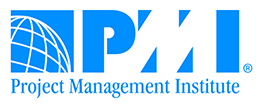PMBOK4 to PMBOK 5 deeper drill (4)
Some of the changes in the early sections of the book appear to be there for the purpose of justifying project management’s role as a business tool in adding value.
- PMO now described as having three types: supporting, controlling and directive
- Expands on the concept of operations management including operational stakeholders
- Adds a new section on Business Value
- Introduces a concept called Project-based organizations
- Redefines sponsor to be more than money provider. He or she is someone accountable for enabling success
- More about the project team and how it can be dedicated or part-time
- Schedule and cost management plans don’t just appear out of nowhere but now have their own processes with those documents as outputs
- Change log is now an output of Integrated Change Control
- Rough order of magnitude has changed from +-50% to -25% to +75%. Definitive estimate has changed from +-10% to -5% to +10%
- Added new quality tools, e.g. tree diagrams, PDPC charts (Section 8.2.2.1)
- Description of the seven quality tools (formerly Ishikawa seven basic tools) moved from QC to QA. All of them are now used in all quality processes.
- Adds an adaptive project life cycle to take Agile into consideration.
- Under Control Schedule, discusses concerns in controlling an Agile schedule
- Now has three work performance values: Work performance information, work performance data, work performance reports. (More detail next post)
- Project management information system may include key performance indicators
- PM is defined in both charter and stakeholder register
- Charter used to say can be written by sponsor or PM. Now it says PM should “participate in development to obtain a foundational understanding of requirements
Next post: More changes and three types of work performance


Comments are closed.